CNC machining, short for Computer Numerical Control machining, is renowned for being one of the most popular high-tech methods of digital manufacturing that has completely transformed the engineering industry.
In this blog, we’ll explore how CNC machining works and the benefits of using CNC machining for your next project:
What is CNC machining?
CNC machining is a manufacturing process in which pre-programmed computer software automates, monitors and controls the movement of CNC machinery.
Unlike 3D printing, which builds objects layer-by-layer, CNC machining is a form of subtractive manufacturing, using written code to remove material and shape the final product.
How CNC machining works
CNC machining makes pre-programming the machine’s speed and position functions possible, running them through software in consistent cycles. The process includes:
Step 1: Designing the part
The first step involves creating a detailed 2D or 3D design of the part to be manufactured using CAD (Computer-Aided Design) software, which acts as a blueprint for the CNC machine.
Step 2: Converting to a CNC programme
Programmers convert the CAD design file into computer code, typically G-code, for the CNC system to understand and execute the machining process.
This code is transformed into a CNC programme, often using CAM (Computer-Aided Manufacturing) software, allowing control over speed, feed rate and coordination.
Step 3: Setting up the machine
Before starting the machining process, the CNC machine undergoes meticulous set up. This includes securing the workpiece, selecting and installing the appropriate tools and loading the CNC programme.
Subsequently, the operator conducts a trial run to verify there are no errors in the coding.
4. Machining the part
The CNC machine follows the programmed instructions to control the cutting tools, which move along various axes to shape the workpiece. This process is highly precise and can involve multiple tools and operations like drilling, milling and turning.
The CNC machining starts with a block of material, called a blank, and uses fast-moving cutters to quickly carve away material and create the finished part. It carries out the dimensional tasks as specified, much like a robot.
Top 6 advantages of CNC machining
Precision
CNC machines operate with extreme accuracy, capable of producing parts with tight tolerances. Consistency Once programmed, CNC machines can produce numerous parts with exact uniformity. The process allows for consistency that would be difficult, if not impossible, to replicate manually.
Flexibility
Changing the production from one part to another is relatively simple, allowing for efficient small-batch production runs or large-scale production.
Speed
CNC machining can produce parts quickly, significantly reducing production times compared to traditional methods, for ultimate productivity.
Automation
The production of parts via pre-programmed software is mostly automated, requiring minimal intervention from users.
Suitable for a wide range of sectors
Essentially, there are no limits to what you can achieve with CNC machining.
At GW Martin, we are proud to have extensive industry experience working across multiple sectors, including:
- Defence
- Aerospace
- Automotive
- Medical
- Commercial
For a trusted precision manufacturing partner using the latest cutting-edge technology, call our expert team on 023 8064 2922 or email This email address is being protected from spambots. You need JavaScript enabled to view it..




